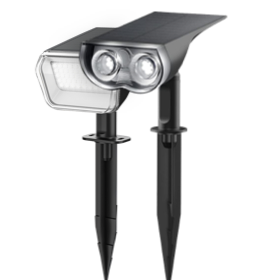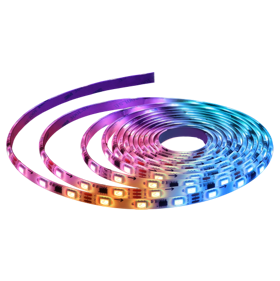Daylight vs Bright White Light Bulbs: Key Differences
Daylight vs Bright White Light Bulbs: Key Differences
Lighting plays a crucial role in our daily lives, influencing our mood and productivity in ways we often overlook. Whether you’re curling up with a good book, working remotely, or simply winding down after a hectic day, the type of light you choose can dramatically affect your experience. Among the various lighting options, daylight and bright white light bulbs are two popular choices that can create distinct atmospheres in your home. Daylight bulbs aim to replicate the invigorating brightness of natural sunlight, while bright white bulbs emit a cooler, more neutral light that enhances visibility, making them suitable for focused tasks. This article will delve into the key differences between these two types of bulbs, their ideal applications, and help you determine which option is best for your specific needs.
Daylight vs Bright White Light Bulbs: Which is Better?

What are Bright White Light Bulbs?
Bright white light bulbs are designed to emit a cooler light that falls within a specific color temperature range of 3500K to 5000K on the Kelvin scale. This cooler spectrum gives them a neutral appearance, making them a versatile lighting choice for various settings, from home to office. Unlike warmer bulbs, which create a cozier atmosphere, bright white bulbs provide a more sterile and focused light, ideal for tasks that require clarity and precision. Their balanced color temperature helps enhance visibility, making them particularly effective in environments where detailed work is performed.
What are Daylight Light Bulbs?
Daylight light bulbs are specifically engineered to mimic the appearance and quality of natural sunlight, offering a vibrant and bright light that can significantly enhance the ambiance of any space. Typically, these bulbs operate within a color temperature range of 5000K to 6500K, providing a bright, white illumination that closely resembles daylight. This higher Kelvin range not only helps to brighten even the darkest rooms but also improves color accuracy and visibility, making it an excellent choice for areas where clarity is essential, such as kitchens, living rooms, and workspaces. By emulating natural light, daylight bulbs can positively influence mood and energy levels, making them a popular choice for residential and commercial settings alike.
Daylight vs Bright White Light Bulbs: Kelvin Rating Differences
|
Kelvin |
3000K |
5000K |
|
Lighting Type |
Bright White |
Daylight |
|
Optimal Environments |
Ideal for cozy environments such as entryways, outdoor patios, garden lighting, and bathrooms, where a warm ambiance is desired to create a welcoming atmosphere. |
Best suited for functional spaces like garages, driveways, basements, and workshops, where clarity and brightness are essential for safety and efficiency. |
|
Lighting Fixtures |
Commonly used in overhead lighting, vanity lights, accent lamps, and decorative fixtures that enhance the aesthetic appeal while providing comfortable illumination. |
Typically utilized in security lighting, task lighting, shop lighting, and industrial applications to ensure maximum visibility and focus during detailed work or activities. |
Related Articles:
Daylight vs Soft White Bulbs: How to Choose Smart Lighting for Your Home
Which is Brighter: Daylight or Bright White?
Lumens and Wattage
When evaluating lighting options, it’s crucial to understand that brightness is primarily measured in lumens, not wattage. While wattage indicates the amount of energy consumed by a bulb, lumens quantify the total light output.
Comparison of Light Output
Daylight bulbs typically produce more lumens than bright white bulbs, making them ideal for environments where vibrant and clear lighting is essential. For instance, daylight bulbs often emit between 1,500 to 2,500 lumens, making them popular choices for spaces like art studios, photography studios, and workspaces that require precise color accuracy and high visibility. In contrast, bright white light bulbs usually range from 800 to 1,200 lumens, providing adequate brightness for general tasks but falling short in applications where high clarity is paramount. If you're interested in maximizing your lighting experience, especially in finding the brightest smart bulbs for your needs, click here to check out how to choose the right brightest smart bulb. Brighten Your Home with 1600LM: Linkind smart light bulbs offer 1600 lumens (100W equivalent) for bright, energy-efficient illumination with only 14W consumption. Alexa & Google Home Voice Control: Control your smart bulbs with voice commands via Alexa and Google Home, adjusting brightness and color temperature effortlessly. Music Sync & Preset Scenes: Sync your lights with music and choose from Party, Dynamic, Calm, or Auto Rhythm modes via the AiDot App, plus festive preset scenes. 16 Million Colors & Tunable White: Enjoy 16 million colors and adjustable white light (1800K to 6500K) with high Color Rendering Index (CRI) for vibrant, true-to-life colors. Wi-Fi & Bluetooth Dual Connection: Experience reliable connectivity with 2.4GHz Wi-Fi and Bluetooth, allowing local control through the AiDot App without constant Wi-Fi.
TOP Brightest Smart Bulb: Linkind A21 Smart Light Bulbs - 1600 lumens
Brighten your home with Linkind A21 Smart Light Bulbs, delivering a remarkable 1600 lumens equivalent to a traditional 100W bulb, while consuming just 14W of energy. This energy efficient lighting solution not only illuminates your space but also helps you save on electricity bills. Enjoy the flexibility of 16 million vibrant color options and adjustable white light from Bright White to Daylight (1800K to 6500K), all featuring a high Color Rendering Index (CRI) for stunning, true-to-life colors that enhance your decor. With smart dimming capabilities ranging from 1% to 100%, you can easily create the perfect ambiance for any occasion. Designed with a classic A21 shape and an E26 base, these bulbs are incredibly easy to install and fit seamlessly into a variety of fixtures.

Benefits of Daylight vs. Bright White Light Bulbs
Advantages of Bright White Bulbs
Bright white bulbs excel in environments where clarity and focus are crucial. Their cooler light spectrum enhances visibility, making them ideal for workspaces, offices, and areas requiring detailed tasks. This type of lighting minimizes eye strain and promotes better concentration, which is particularly beneficial during extended work hours. Additionally, bright white bulbs are generally energy-efficient, leading to reduced electricity bills, making them a cost-effective lighting solution over time.
Advantages of Daylight Bulbs
Conversely, daylight bulbs are crafted to emulate the quality of natural sunlight, offering a vibrant and uplifting atmosphere. They are especially suitable for living spaces, kitchens, and social areas where a warm, inviting environment is desired. The high lumen output of daylight bulbs enhances color accuracy and clarity, making them perfect for precision tasks, such as cooking or artistic projects. Furthermore, the energizing effects of daylight lighting can elevate mood and vitality, making them a preferred choice for communal spaces.
Conclusion
In the debate between daylight and bright white light bulbs, understanding their unique characteristics and benefits is essential for making an informed choice. Bright white bulbs are ideal for enhancing visibility and focus in work environments, promoting productivity and reducing eye strain. They are energy-efficient and cost-effective, making them a smart choice for spaces requiring clarity. On the other hand, daylight bulbs create an inviting and vibrant atmosphere that mimics natural sunlight, enhancing color accuracy and uplifting mood, perfect for living areas and communal spaces. By considering your specific needs and preferences, you can select the right type of lighting to enhance both functionality and ambiance in your home or workspace, ensuring a brighter, more enjoyable environment.
FAQs about Daylight and Bright White Light Bulbs
Q1: What is the main difference between daylight and bright white light bulbs?
The main difference lies in their color temperature: daylight bulbs typically range from 5000-6500K, mimicking natural sunlight, while bright white bulbs range from 3500-5000K, offering a cooler, more neutral light.
Q2: Which type of bulb is better for workspaces?
Bright white light bulbs are generally better for workspaces, as their cooler light helps improve focus and reduce eye strain.
Q3: How do I choose the right bulb for my home?
Consider the function of the room. If you want to create a warm, inviting space, choose daylight bulbs. For areas requiring clarity and focus, bright white bulbs are ideal.
Q4: Are there energy-efficient options for both types?
Yes, many brands offer energy-efficient LED options in both daylight and bright white categories, allowing you to enjoy brightness without high energy costs.
Q5: What are the most recommended brands for each bulb type?
For bright white bulbs, Philips and GE are highly recommended. For daylight bulbs, look for brands like Sylvania and Cree, known for their quality and performance.































